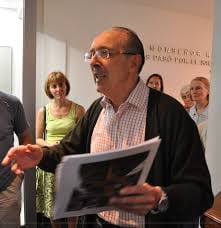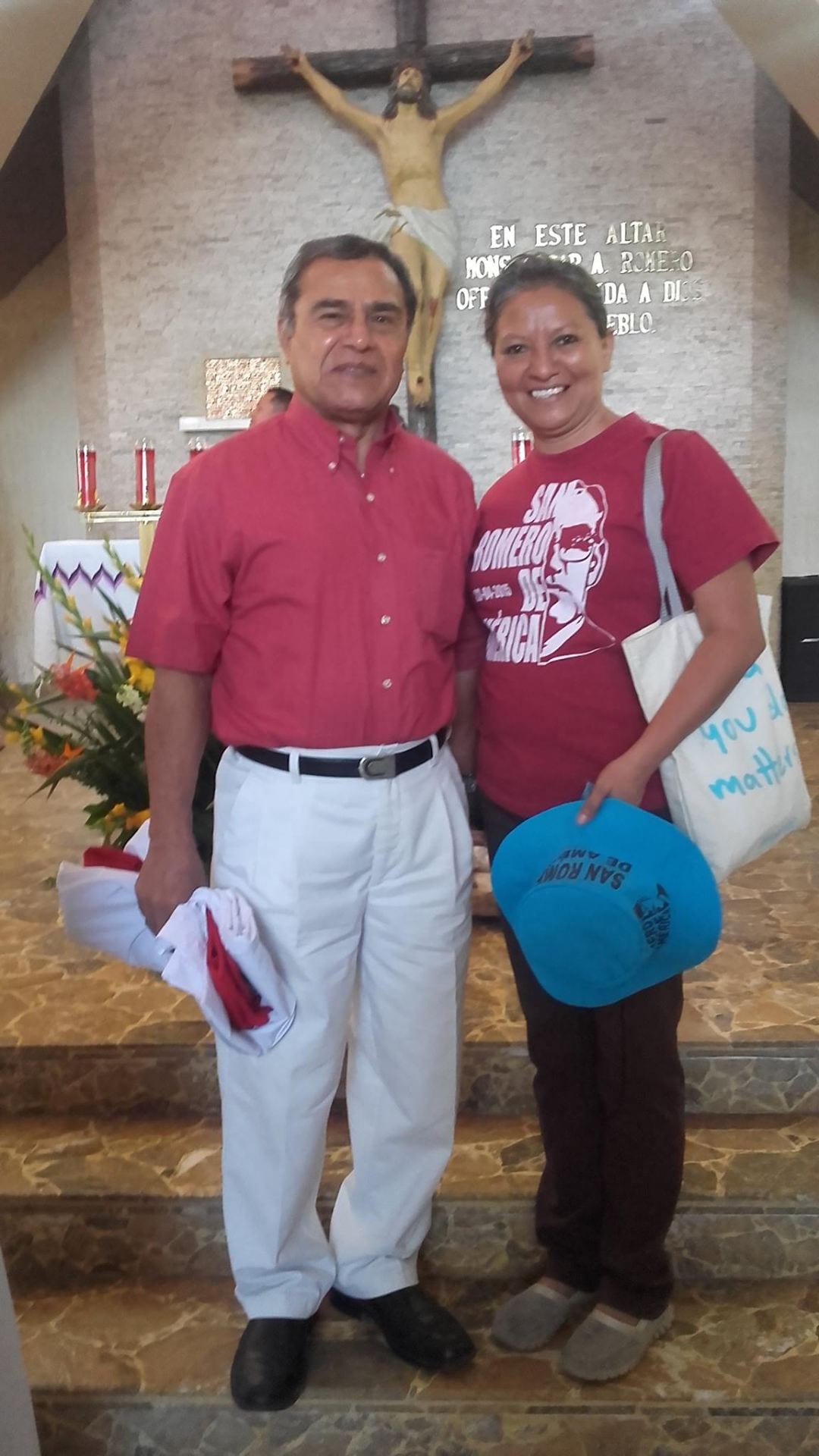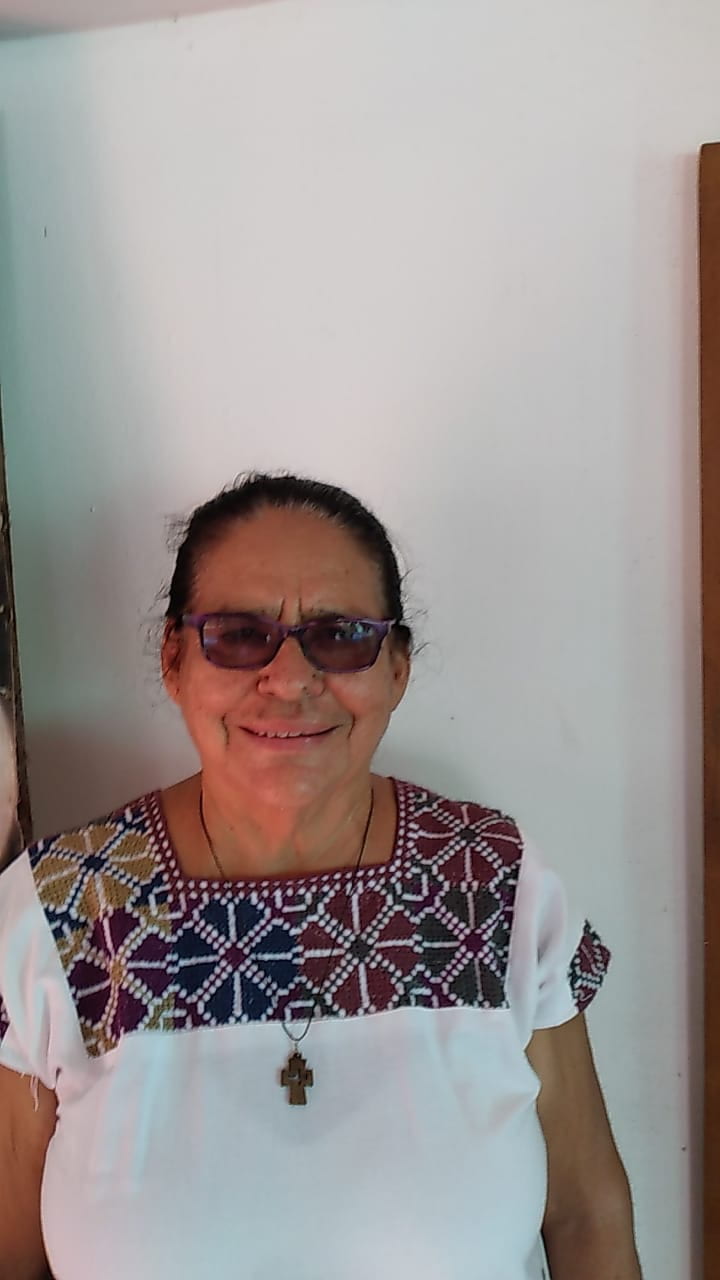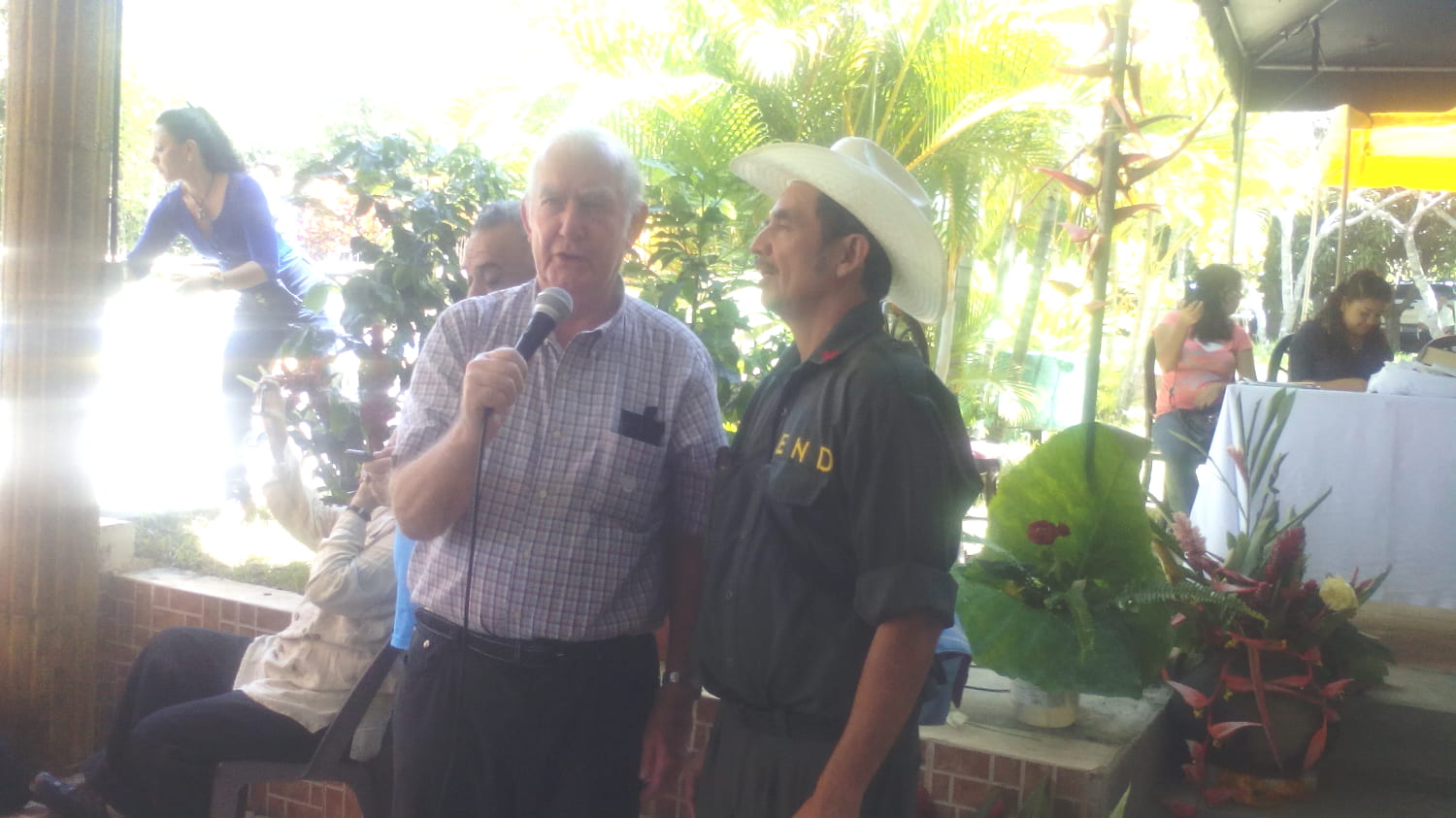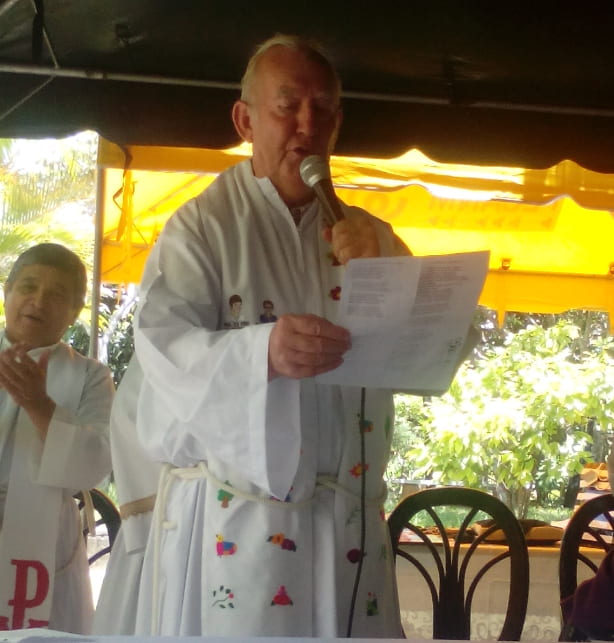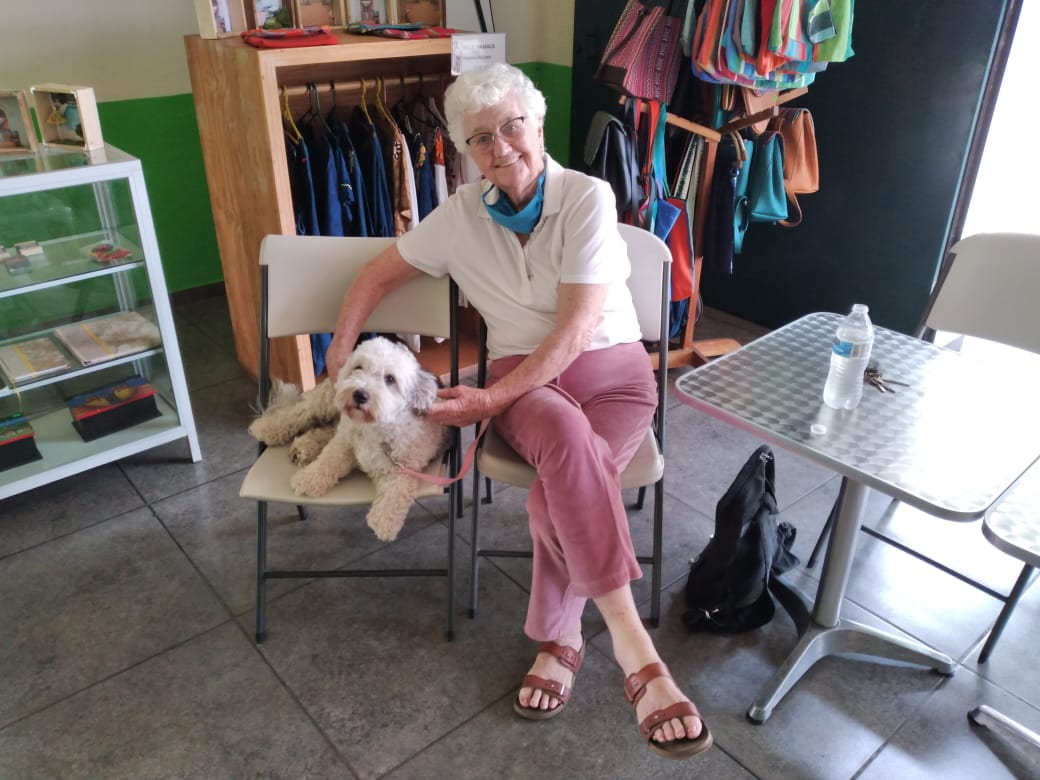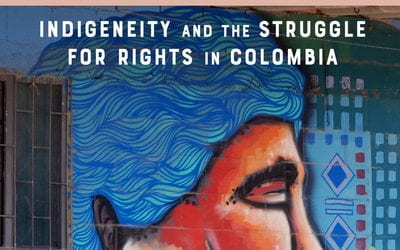El Salvador, Back in the Day
A New Way of Being Church and Doing Theology
The glory days are long gone.
They began in the 70s. Extraordinary grassroots pastoral work, accompanied by a then-new school of thought known as “liberation theology,” flourished in Latin America, especially in El Salvador. Even as lay leaders, nuns and priests were being captured, tortured and murdered in the name of anti-Communism, the movement continued to grow. One can still see traces of it in El Salvador, but they don’t compare with what once existed.
Nevertheless, with the arrival of Pope Francis, things have begun to look up, with a more favorable attitude toward social justice work, at least at the level of theory. Liberation theologian Jon Sobrino says that when he spoke with Pope Francis in Rome, the pope encouraged him: “Write! Keep writing!”
The pope has also met and concelebrated Mass with Fr. Gustavo Gutierrez, a controversial Peruvian theologian recognized as the father of liberation theology. Speaking with a group of Jesuits in 2019, Francis said, “Today, we old people laugh about how worried we were about liberation theology.”
In the 1970s, many parishes had grassroots church communities, comunidades eclesiales de base (CEBs), small groups in which neighbors met to pray and read the Bible together. But it was not inward-looking prayer; parishioners took a harder, more critical look, in light of the gospels, at the problems their country was facing, and asked what they could do about them. In the parlance of liberation theology, the mandate of the grassroots church communities was to see, judge and act. Some members ended up joining unions; others organized into militant farmworker groups.
But in today’s El Salvador, it will take much more than that to bring liberation theology and base communities back to the prominence they once enjoyed.
Among some people there is a hesitation to participate in base communities. They seem to be saying, “Been there, done that— and look what it got us the last time: a war, the loss of our loved ones, and an economic situation even more precarious than the one we had before the war.” Luis Coto, a supporter of the base community movement who is now pastor of a parish 20 miles east of San Salvador, notes a reluctance today to become involved in pastoral work that touches on themes of social justice.
They felt supported by the church. In 1971 an international synod of Catholic bishops had declared,
Action on behalf of justice and participation in the transformation of the world fully appear to us as a constitutive dimension of the preaching of the Gospel, or, in other words, of the Church’s mission for the redemption of the human race and its liberation from every oppressive situation.
On the home front, Archbishop Óscar Romero declared, in a Sunday homily, “Let it be clearly understood that I study liberation theology through these solid theologians.”
Luis Coto, Noemi Ortiz and Rogelio Ponseele were, together, “present at the creation” of that new pastoral work in San Salvador’s impoverished Zacamil neighborhood. In an interview, Coto recalls how, 50 years ago, as a 21-year-old seminarian, he first heard about a new approach to pastoral work, and a new way of doing theology that was more humble, more modest than its predecessors. No longer proclaiming theology to be “the Queen of the Sciences,” as it was labeled in the catechisms, it said, instead, “What’s most important is the first step: the lived experience of the members of the CEBs; our job is simply to accompany them in the second step, when they reflect, theologically, on that experience.”
Coto walked the neighborhood streets, accompanying an older seminarian, Octavio Ortiz. Making house-by-house visits, they came to know the community’s members.
In those days, many responded with enthusiasm and generosity to this new way of being church. For some it marked the beginning of a process in which they became more socially aware and committed themselves to efforts aimed at reducing injustice in the country.
Those efforts met with a vehement and often violent response. In 1979 Ortiz—by then a priest—was shot dead, and a tank was rolled over his head, when the National Guard invaded a weekend youth retreat he was leading. Four of the youth at the retreat were also murdered.
The government’s claim — that the gathering was a guerrilla training session—was quickly shown to be false; Archbishop Romero called it “a lie from beginning to end.”
Noemi Ortiz came to the CEBs as a young woman through “Christian initiation” groups. “We talked about aspects of our lives, and saw how Biblical texts could illuminate our discussion,” she says. She helped found La Pequena Comunidad (“The Small Community”), a group of women religious who took their vows before Archbishop Romero. Two of them worked as his secretaries by day; at night they were in the barrios, accompanying the members of the CEBs. One of them was later killed while serving as a health worker in a conflict zone.
Rogelio Ponseele, a Belgian priest, came to El Salvador in 1970 after a stay at San Miguelito, a parish in Panama that modeled the new pastoral work for all of Latin America. He and another Belgian priest lived in a small house attached to the church in Zacamil, but they began to sleep elsewhere when their work drew threats. One night, exhausted after a meeting at the parish ran late, they almost decided to spend the night there. Finally, they opted to leave; later that night, the house was dynamited. Unable to continue working in San Salvador, Ponseele moved to one of the conflict zones and ended up being a pastor there during the entire war, with Octavio Ortiz’s elderly father, a catechist, working alongside him.
In those heady early days, the people in the CEBs felt close to Archbishop Romero. The first priest to be murdered, Rutilio Grande, had worked extensively with the CEBs in the town of Aguilares. When he was killed, Romero went to the parish, arriving at midnight and staying into the early morning hours, meeting with distraught parishioners. As a sign of solidarity with those who were under threat, Romero cancelled Masses in all the parishes for the following Sunday and invited the entire archdiocese to a single Mass at the cathedral.
Then came the encounter that convinced people that Romero was willing to take risks with them and for them. The army had occupied Aguilares for a month after Fr. Grande’s death, barring people from entering or leaving, and profaning the church, scattering hosts from the tabernacle on the floor. The day after the army withdrew, Romero returned to Aguilares. Jon Sobrino, who accompanied him, says that in his homily, Romero told the people that the soldiers had profaned them and not just the church. “You are the crucified people,” he told them.
A procession through town followed the Mass. When it neared a government building, National Guardsman stationed outside pointed their rifles at the terrified people, who froze. What to do? Should they retreat, conceding defeat? Sobrino, who was standing among them, says they turned to Romero, who responded with one word: “Adelante!” (“Forward!”) With the Guardsmen still brandishing their weapons, the procession resumed, moving toward them. At the last minute, the Guardsmen lowered their rifles and allowed them to pass.
“Forward!” was, in effect, what Romero said to his people during his three years as archbishop. Sunday after Sunday, in his homilies in the cathedral, he encouraged those who were trying to bring justice, and denounced those who were trying to block it. He and his people kept going forward until they couldn’t—until Romero was murdered and an all-out civil war claimed the lives of many members of the CEB’s, drove others into exile and yet others to the hills, where they joined those who, feeling that all doors to peaceful change had been closed, had decided to take up arms.
Times have changed—drastically. Salvadorans no longer have an archbishop who cries out, “Forward!” There are fewer CEBs today, and the ones that do exist are often more timid. Liberation theology is seldom mentioned. Memories are still fresh of a war which, it seemed, would never end; it went on for twelve years, claiming 75,000 lives, until peace accords finally brought it to a close in 1992.
The years following Romero’s death were difficult ones for supporters of liberation theology. In the 80s the Vatican’s Congregation for the Doctrine of the Faith (CDF) produced two major statements critical of liberation theology, the 1984 “Instruction on Certain Aspects of the ‘Theology of Liberation’” and the 1986 “Instruction on Christian Freedom and Liberation.” Defenders of liberation theology retorted that the documents were criticizing a straw man and not the theology they were preaching.
Pope John Paul II expressed reservations about liberation theology, but also called it “timely, useful and necessary.” While critics said it was too influenced by Marxist analysis, the pope had written earlier that “criticism of capitalism …is the unquestionable ‘part of the truth’ embodied in Marxism.”
The situation became more difficult in El Salvador in 1995, after the death of Archbishop Arturo Rivera Damas, Romero’s like-minded successor. He was replaced by the conservative Opus Dei member Fernando Sáenz Lacalle, who proclaimed, on the day Rome announced his appointment, that there was “no room” in the church for liberation theology. He quickly removed the head of the archdiocesan radio station and newspaper, a priest who was one of Romero’s closest collaborators. Luis Coto, who had been named rector of the interdiocesan seminary, describes how he was replaced by the bishops conference, even though he had been acclaimed for major changes he made in the formation program for young seminarians, allowing them more participation and more opportunity for questioning and criticism. Coto says Archbishop Sáenz told him that his way of running the seminary was too “horizontal,” and that the bishops wanted to reinstate the traditional “vertical” approach.
In 1998 the Vatican launched an investigation of the Jesuit-run Central American University, regarded by some as a hotbed of liberation theology. The university emerged unscathed from the investigation. Only nine years earlier , six Jesuits, along with a housekeeper and her daughter, had been brutally murdered at their university residence by the armed forces. Sobrino, who lived at the residence, escaped the attack because he was traveling at the time.
But he was subject to different types of attacks. The Vatican’s Congregation for the Doctrine of the Faith issued a chilling warning in 2007 against Sobrino’s theology. He said in an interview that the warning misrepresented his views, and continued to teach at the university.

On the 40th anniversary of Luis Coto’s ordination: from left to right: Paola Figueroa, daughter of the former editor of the archdiocesan newspaper, Orientación; Father Octavio Cruz; Father Luis Coto; Roger Herrera, editor of Orientación.
Yet, even with the ups and downs for liberation theology and the accompanying pastoral work, there have been moments of vindication, when people have come to see—and Fr. Rogelio Ponseele calls this a key tenet of liberation theology—that the Bible isn’t some old dusty tome; it’s a book about the people and for the people.
Peggy O’Neill, a Sister of Charity and a theologian who has been working in El Salvador since 1987, tells a story that illustrates this.
For her the road to El Salvador began in Chile, when she went there in the early 80s to give talks on feminist theology. “I was speaking with women who were very poor, and other women who were working with them. I fell in love with both groups, with these strong women who were holding up the world. They were building a theological framework for what they were doing. It was really God’s work. And I decided that maybe, if I stood where those women were standing— working with women, alongside them and learning from them—that maybe I could be like them when I grew up.”
O’Neill said in a recent interview that when she first visited El Salvador, for a brief stay in a refugee camp, “I was aware that I was sort of ready, but as Jon Sobrino says, you’re never really ready to see innocent suffering. You begin to look at everything differently.”
Later O’Neill and four Franciscan sisters moved to an area that was being repopulated by people who, earlier in the war, had been forced to flee the country. “Just like those in the refugee camp,” said O’Neill, “the people there were living with loss and sadness and fear—but still with hope.”
Liberation theology says that such people can identify with the Bible, can come to see it not as an ancient book, but as one which is telling a story very much like theirs. In that regard O’Neill tells the story of Martha, a campesina whose son was murdered and decapitated by the army. She found his head.
O’Neill had a framed picture of a modern sculpture of the Biblical scene known as the Visitation, in which Mary, the mother of Jesus, and Elizabeth, mother of John the Baptist—both pregnant—are together. She brought it to a daycare center in a war zone where she was working with Martha and other women. “You’ll identify with these women,” O’Neill told them. “They both lost their sons.”
“They all knew who Mary was,” said O’Neill, “and that Jesus died on the cross. But they didn’t know about John the Baptist. One of them asked me, ‘How did he die?’ He was decapitated, but I didn’t want to say that because Martha was there, and I was afraid she’d fall apart. So I said, ‘Oh, we’ll read that Bible story tomorrow.’ And they said, ‘Well, just tell us how he died; You don’t have to tell us the whole story.’ So I told them, and we all got more quiet. I was looking at Martha, and she was staring at me and the picture. I could see fresh tears, but I could also see her mouth opening. At first it almost looked like a smile, but she was whispering, ‘Somebody knows my pain.’ She started walking toward the picture. I was holding it. It was quite large. By the time she got to me, she was shouting, ‘Thanks be to God. Somebody knows my pain. Oh God, thank you.’ She came up to me and hugged me and the picture—it was between us. And I was saying to myself, ‘Oh my God, I thought it was going to make her fall apart—and it consoles her. This story is alive. It’s still speaking. This word has life for her.'”
Mothers like Martha still grieve in the turbulent environment of today’s El Salvador. The country has entered a period of great uncertainty—politically, economically and socially. There’s little reason to think this will change anytime soon. The levels of polarization and anger are as high as they’ve ever been, including during the war years. People will surely long for a respite; whether they’ll find it is far from certain. The church workers who, over the past 50 years, have established themselves as long distance runners—Noemi, Peggy, Rogelio, Luis, Jon and so many others—will have to find ways to carry on and to accompany others on that same quest. How? As of now, there’s no telling, but one can imagine them identifying with the words of Bob Dylan’s “Tangled Up in Blue:” “the only thing we knew how to do was to keep on keepin’ on.”
Winter 2021, Volume XX, Number 2
Gene Palumbo is a freelance journalist, based in El Salvador. He has reported for The New York Times, NPR, BBC, CBC (Canada), Commonweal, America, National Catholic Reporter, the Christian Science Monitor and Time magazine.
Related Articles
Indigenous Peoples, Active Agents
Recently, the Amazon and its indigenous residents have become hot issues, metaphorically as well as climatically. News stories around the world have documented raging and relatively…
Beyond the Sociology Books
If you are not from Colombia and hoping to understand the South American nation of 50 million souls, you might tend to focus on “Colombia the terrible”—narcotics and decades of socio-political violence…
Exodus Testimonios
The audience at Iglesia Monte de Sion was ecstatic as believers lined up to share their testimonials. “God delivered us from Egypt and brought us to the Promised Land,” said José as he shared his testimonio with the small Latinx Pentecostal church in central California…

